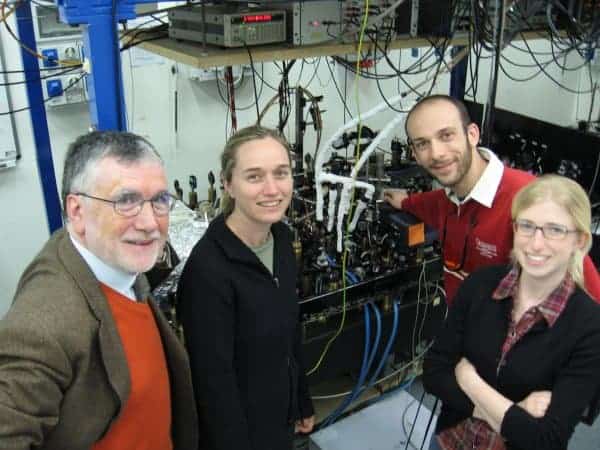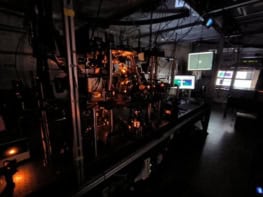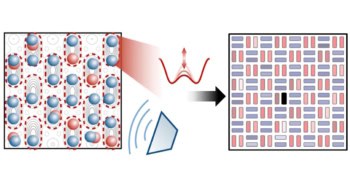Physicists in Italy claim to have obtained the first experimental evidence for a new state of matter called a Bose glass, which they created by cooling a sample of rubidium atoms to near absolute zero. The atoms were held in an "optical lattice", where they normally exist as either a Mott insulator or a Bose-Einstein condensate. But when the researchers created disorder in the lattice, they found that the ensemble behaved like an insulating glass (Phys. Rev. Lett. 98 130404).

Optical lattices are regular arrays of identical energy wells created by crisscrossing laser beams. When very cold atoms are injected into an optical lattice, they settle into the wells, ordered like eggs in an egg-box. Atoms can, however, move around the lattice by tunnelling from one well to another — movement that can be controlled by adjusting the shape, depth and spacing of the wells.
If the atoms can move easily from well to well, all the atoms in the optical lattice can collapse into the same quantum state — the BEC state — which extends as a coherent wave throughout the entire lattice. In this state, the atoms move collectively as a superfluid, experiencing no impediment to their flow. However, if the wells are made deeper, individual atoms occupy just one well each and the coherence and superfluidity are destroyed. The ensemble then becomes a Mott insulator.
Physicists have long wondered if the coherence and superfluidity of a BEC could also be destroyed if disorder were deliberately introduced to the optical lattice. This state of matter, which was first predicted in 1989, is known as a Bose glass. It was given this name because BECs can only be formed easily with bosons and because the disorder is reminiscent of the structure of traditional glass, which does not have a crystalline lattice.
Now Leonardo Fallani and colleagues at the European Laboratory for Non-linear Spectroscopy at the University of Florence have done just that. The researchers began with a 1D optical lattice in which all the wells were identical in terms of depth, width and spacing. By overlapping a second set of laser beams that were slightly mismatched to the lattice, they were able to create a disordered lattice in which wells all had different depths and were no longer the same distance apart. The level of disorder could also be increased by tweaking the laser beams.
In one experiment, the researchers began with an ordered Mott insulator and measured the excitation energy spectrum – essentially the energy required to remove an atom from its well and place it into a neighbouring well. This energy spectrum had discrete peaks characteristic of atoms in a lattice of identical energy wells. However, as disorder was introduced, these peaks began to vanish, suggesting that the system was transforming from an ordered insulator to a disordered insulator resembling a glass.
In a second experiment, the researchers began with a disordered lattice in which atoms could still tunnel between wells. As a result, a fraction of the atoms were in the superfluid state and therefore behaved as a coherent wave – the remaining atoms were thought to be in the Bose glass state. As the depth of the wells was increased, the researchers observed that the coherence – and therefore the fraction of atoms participating in the superfluid state — rapidly approached zero. This, according to the researchers, established that the Bose glass is an insulator rather than a superfluid.
Fallani and colleagues claim that these two observations are consistent with formation of a Bose glass. However, they also admit that further work must be done to confirm the existence of this new state. In particular, they must show that the excitation spectrum is completely devoid of any structure, which is an important signature of a genuine Bose glass.



